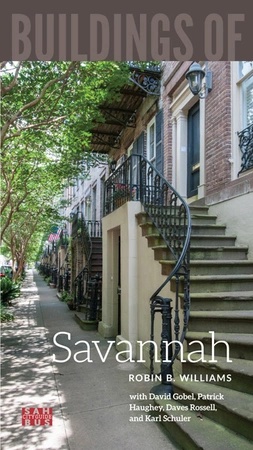
Erected on the site of the only warehouses to bridge River Street, this hotel, developed by Merritt W. Dixon III, followed their precedent, but greatly increased the scale. Initially planned in 1969 to rise fifteen stories following the demolition of the warehouses, the hotel met strenuous opposition from local preservationists. A brokered compromise led to the involvement of Philadelphia city planner Edmund Bacon, who recommended lowering its height to match that of City Hall below its dome. The hotel’s bland exterior belies a dramatic full-height lobby atrium with prominent glass-fronted elevators that connect this building to its famous corporate brethren in Atlanta designed by John Portman, who popularized these now-pervasive features in the world of hotel architecture. The Bohemian Hotel (2009, Design Reese Architects and Associates) to the west at 102 W. Bay Street displays considerably more urban sensitivity. Erected by hotelier Richard Kessler, the hotel features a blend of historicist and modernist design on a long-vacant site. The rooftop terrace, the first on Savannah’s riverfront, has redefined how people experience the area with its panoramic views.

